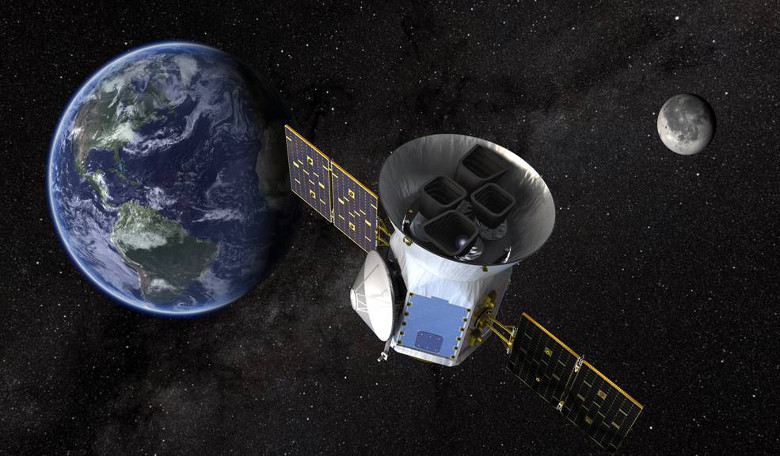Jetting off today around 6.32 EDT (11.32pm BST) for its new home in a high-Earth orbit (HEO) is TESS, the first-ever spaceborne all-sky transit survey whose primary mission is to search for planets outside of our Solar System.
TESS, which stands for the Transiting Exoplanet Survey Satellite, will search for its targets by monitoring more than 200,000 stars for temporary drops in brightness caused by planetary transits. The survey is hoping to uncover thousands of exoplanets from gas giants to small rocky worlds orbiting a diverse range of stellar types and covering a wide span of orbital periods – some in the habitable zones of their host stars.
The mission is expected to last two years, but the follow-on investigation work could take decades, as the most favourable targets that TESS finds will be scrutinised further to look at their masses, sizes, densities, and atmospheric properties.
TESS’s design is based on Orbital ATK's LEOStar-2 platform - the 31st of its type that Orbital has delivered to NASA for their science missions. As TESS’s job is to look but not touch anything, its payload is made up of four identical wide field-of-view CCD cameras that are all mounted on a single plate.
To get the most from its mission, the observatory will be placed in a very eccentric, inclined orbit around the Earth known as a P/2 orbit. It is a never-before-used lunar-resonant orbit and it has been chosen to give the spacecraft a mostly unobstructed view of the cosmos, while helping to keep radiation impact to a minimum.
To boldly go where no observatory has gone before (in orbit), TESS will be hitching a lift on a SpaceX Falcon 9 rocket and so far, the run up to the launch has been textbook. Providing the weather cooperates, it should be all systems go. “We finished our launch readiness review (yesterday morning) and here we are. The spacecraft and the launch vehicle are ready to go,” said Omar Baez, launch director for NASA’s Launch Services Program at a prelaunch news conference last night from NASA's Kennedy Space Center.
With a tight 30 second window in which to get the mission off the ground, all being well, it then takes around 44 minutes after take-off for TESS to separate from the launch vehicle. A series of procedures will then follow in order to get TESS on its way.
“First light of the instruments will be about 8 days after (TESS) has launched and we’ll do a series of propulsive manoeuvres and fly by of the Moon, which will be a tremendously exciting day,” said Robert Lockwood, TESS spacecraft program manager with Orbital ATK at the news conference. Eventually TESS will get into its designated orbit around 12 June, he added.
TESS builds on the success of similar missions such as Kepler, but whereas Kepler was limited to a field of view that covered 115 square degrees, or around 0.25 percent of the sky, TESS will look at the whole sky all at once. To compare, it would take around 400 Kepler-like telescopes all looking at a different patch of sky, all at the same time, to do the same job.
Despite Kepler’s sky coverage looking rather paltry in respect to this latest generation planet finding mission, it is because of Kepler that we now know that about one sixth of all stars have earth-sized planets around them, and that about one fifth of sun-like stars have planets in their habitable zone.
And, if Kepler can find over a thousand exoplanets staring at one small patch of sky, just imagine what TESS will be able to do.











